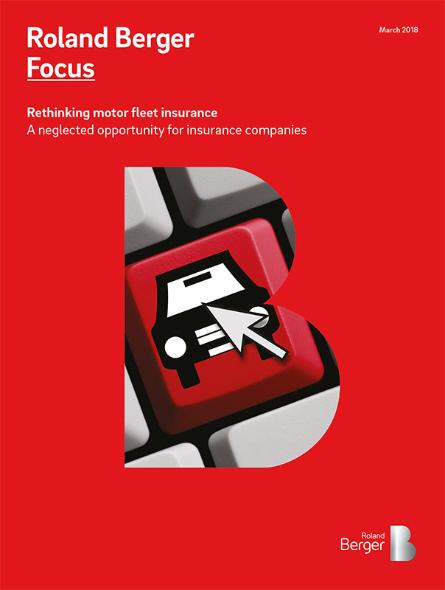Rethinking motor fleet insurance
![{[downloads[language].preview]}](https://www.rolandberger.com/publications/publication_image/364_cover_roland_berger_motor_fleet_insurance_download_preview.jpg)
Motor fleet insurance has historically been unprofitable. New mobility consumption increases its relevance.


Motor fleet insurers have struggled with intense competition and falling margins in recent years, but a brighter future lies ahead. We believe changing mobility patterns, demographic developments and new technologies will drive the return of the fleets, creating exciting opportunities for insurers over the next five to ten years.
First, mobility consumption is shifting because of urbanization. More than half of the world's population already lives in large cities; by 2050, this figure will be two-thirds. One response to this growing demographic shift has been the emergence of car-sharing companies and new taxi models. Increasingly, individual cars are being replaced by fleets.
Exacerbating this trend, younger consumers show a growing preference for usership over ownership, delaying or even avoiding buying vehicles for personal use. Thus, a large share of the personal car park will be replaced by commercial car fleets, while leasing and renting will also gain traction.
Second, new digital technology allows a direct, real-time connection between supply and demand for mobility. By 2020, almost 100 percent of new private and commercial vehicles are expected to be sold with built-in connected-car technology. This will enable insurers to apply usage-based solutions in their B2B business, using the new technology to price the risk for fleet drivers more accurately.
Insurers will also be able to introduce a range of value-added services based on the new technology to further contribute to the profitability of the business. Such services could include stolen vehicle tracking, optimal routing analysis and real-time driver coaching.
Furthermore, many large automotive manufacturers are developing comprehensive packages that offer end-to-end coverage of customers' mobility needs. They are creating a "one-stop-shop" customer experience, where everything the customer requires – including financing and insurance – is met efficiently from a single source. To achieve this, many OEMs are looking for partnerships with insurance companies.
These fundamental changes mean that motor fleet insurance will become highly relevant for insurance companies in the next five to ten years. Re-entering this market could help insurers maintain overall profitability. But they must be willing to develop the right capabilities. We recommend taking action in three key areas:

![{[downloads[language].preview]}](https://www.rolandberger.com/publications/publication_image/364_cover_roland_berger_motor_fleet_insurance_download_preview.jpg)
Motor fleet insurance has historically been unprofitable. New mobility consumption increases its relevance.
